We all know a good experience can make all the difference. An impressive customer service experience, a negative experience browsing a website — a good or bad experience can ultimately make or break someone’s purchasing decision. And as marketers, we’re in the business of experiences — it’s our job to make people feel heard, help them get educated, and pique their curiosity enough to want to know more about how we can help them solve their biggest challenges.
To create and generate demand, we need to invest in the experience. I know this can be daunting, and you might not even know where to start. But building remarkable experiences that drive your buyers to take action does not have to be difficult.
Our customer Mindtickle has made the commitment to invest in its experience and we have seen it firsthand pay off big. Below are 7 examples of ways their marketing teams is using digital experiences to educate buyers, generate pipeline, and close revenue.
- Build a resource center that updates based on your buyer’s browsing behaviors and interests
Create a resource center (Content Hub) mapped to your solution areas and content pillars to drive organic traffic. Then layer in first party and intent data to customize the experience for target accounts. Mindtickle is using Demandbase to serve the right content based on factors like stage of the journey, industry, and intent.
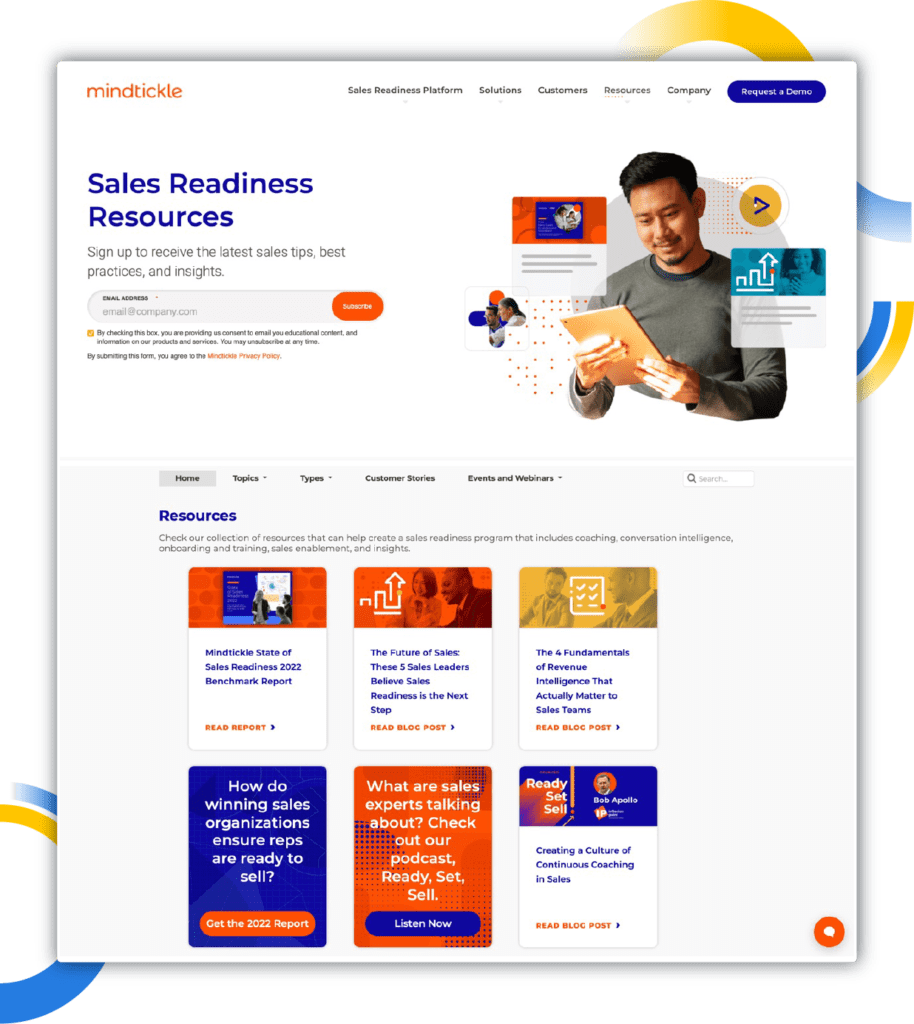
- 2. Create event experiences to leverage on-site and as part of the follow-up experience
There is a lot that goes into events and they are typically a large investment. Mindtickle develops custom event destinations to leverage at every stage of the event lifecycle.
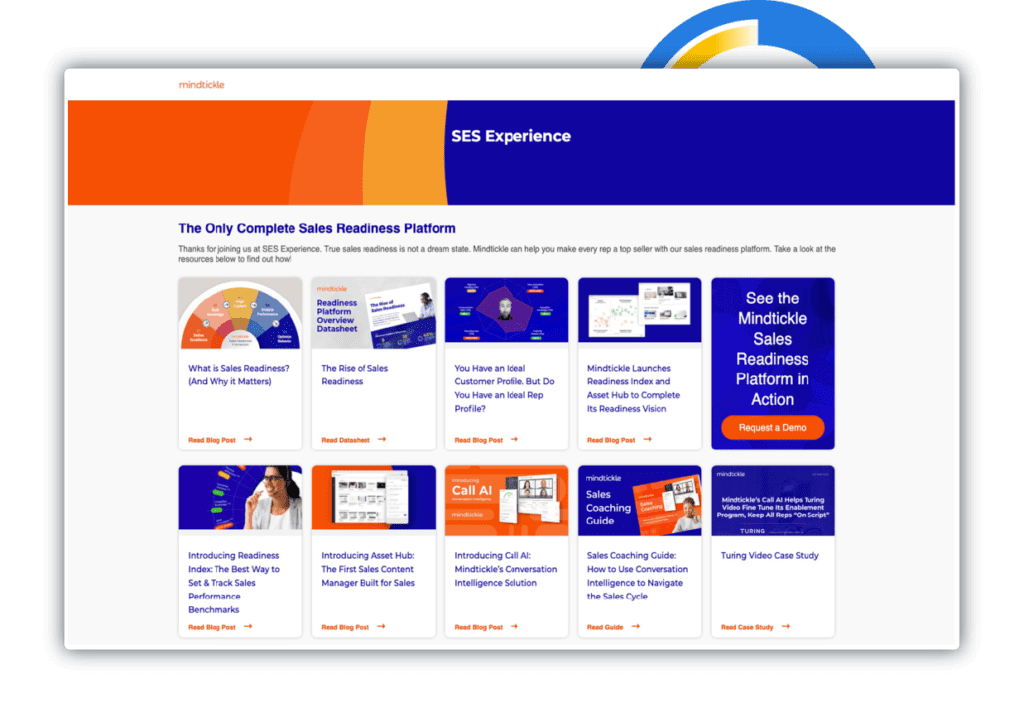
| Pre-Event | During Event | Post-Event |
| Develop an experience with content and ‘know before you go’ details. Make sure there is a way for someone to book a meeting. | Instead a carrying around a bunch of collateral with you or sharing a bunch of links you can build a digital experience. Not only will it make it easier for buyers to learn about your brand with everything in one place. You can also track exactly what they are looking at. | Once the event is over, curate follow-upmaterials and provide an opportunity to book a meeting. Set up notifications for you sales team if target accounts are engaging with the experience post-event. |
Pro tip! Make sure to add a chatbot to the event
experience so you can chat with prospects in real-time.
3. Turn your email nurture programs into an experience
Curating email nurture destinations is an amazing way to drive content consumption and accelerate the buyer’s journey. Content is at the center of every nurture so it only makes sense to package up it all and curate it into a digital destination where your prospects can binge.
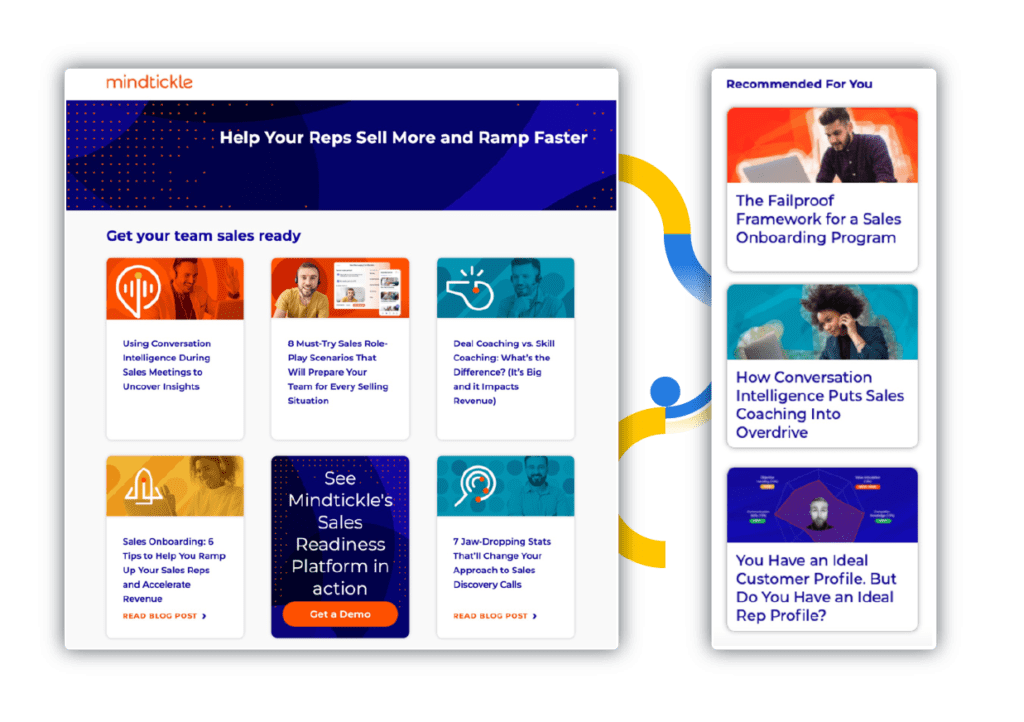
You can serve up tailored content recommendations, and provide the option to request a demo if they are loving what they are seeing.
4. Get personal with your ABM programs in a scalable way
Technology really is a wonderful thing! Mindtickle uses Hushly to build ABM pages to engage target accounts at scale. They could easily swap in account logos, headline, descriptions, videos, and even the sales reps headshot and content information.
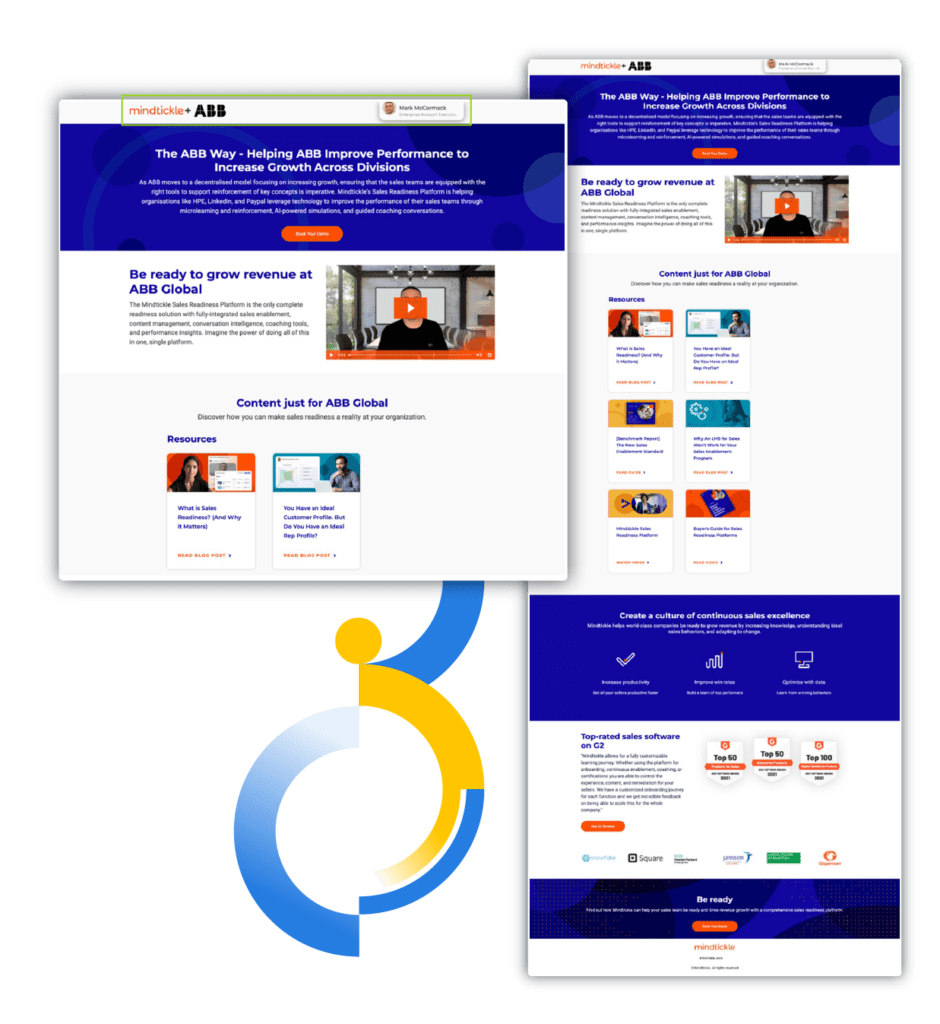
Then as accounts visit the experience they dynamically swap out content and copy based on variables such as segment, buying stage, industry, country, etc. They even added a chatbot on the page so their sales reps can speak to prospects when they hit the page.
5. Level up your website experience with content recommendations that change as your buyers engage
Leveraging Hushly’s content embeds Mindtickle placed content across all their key website and landing pages to ensure their buyer’s always found the information they were looking for.
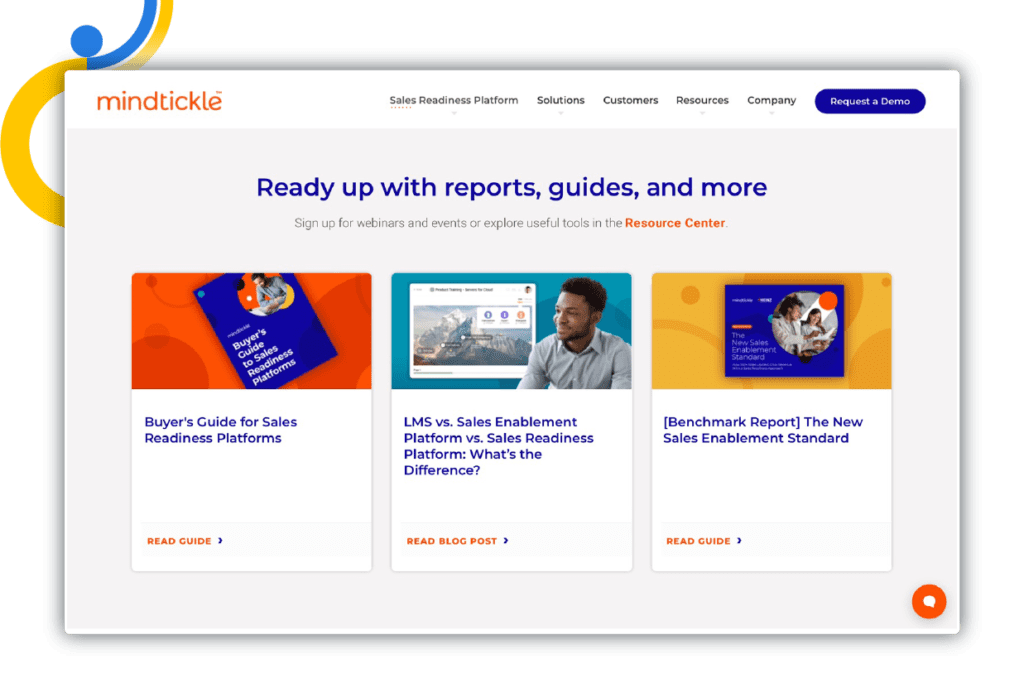
The best part! The content would dynamically swap in and out based on custom account segments they built in Demandbase based on buying stage, industry, and page topic. Once they added this functionality they noticed the velocity across buying stages accelerated by approximately 20% (Read MIndtickle case study).
6. Accelerate opportunities with buyer’s toolkit that adapts to their needs
Last but not least (this one is our favorite). The marketing team was asked to help sales educate and accelerate opportunities that were getting stuck in the sales process. The team came up with the idea to build out what they call the buyer’s toolkit to support pipeline acceleration.
They curated solution overviews, datasheets, case studies, product videos, and more, to ensure buyer’s had all the information they needed to make a decision.
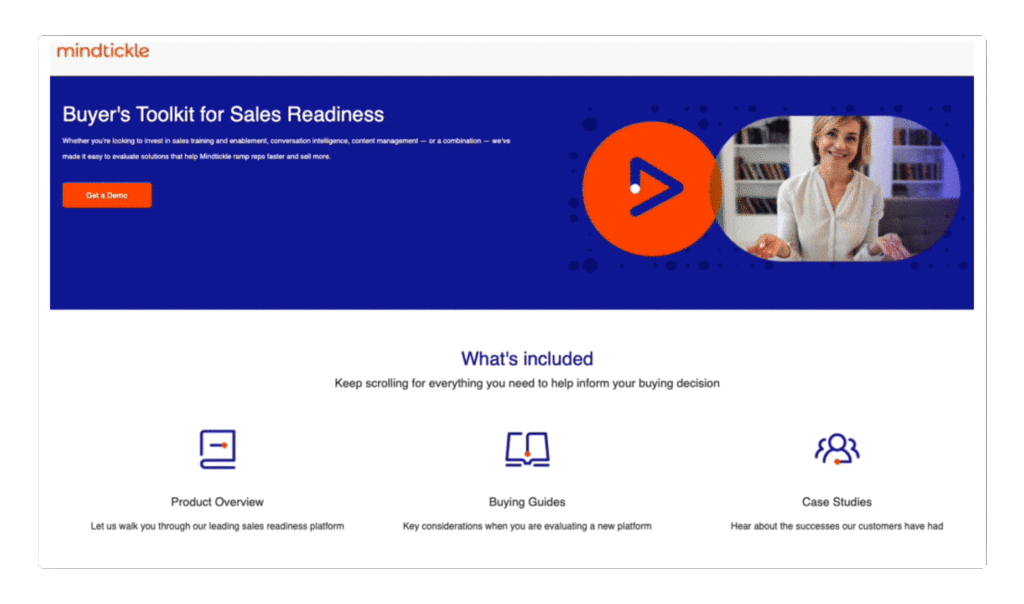
As soon as someone entered the sales process, the experience would automatically begin to distribute across the right channels. They serve it up across sales reps email signatures, on LinkedIn, and in display ads.
Experience drives demand. Period.
Hopefully, these examples of ABM and demand experiences have gotten your gears turning about how you can switch things up to better personalize and scale your marketing programs. It’s time to get creative and build experiences throughout the buyer’s journey that not only engage your buyers but also help you drive demand and sell your product.



